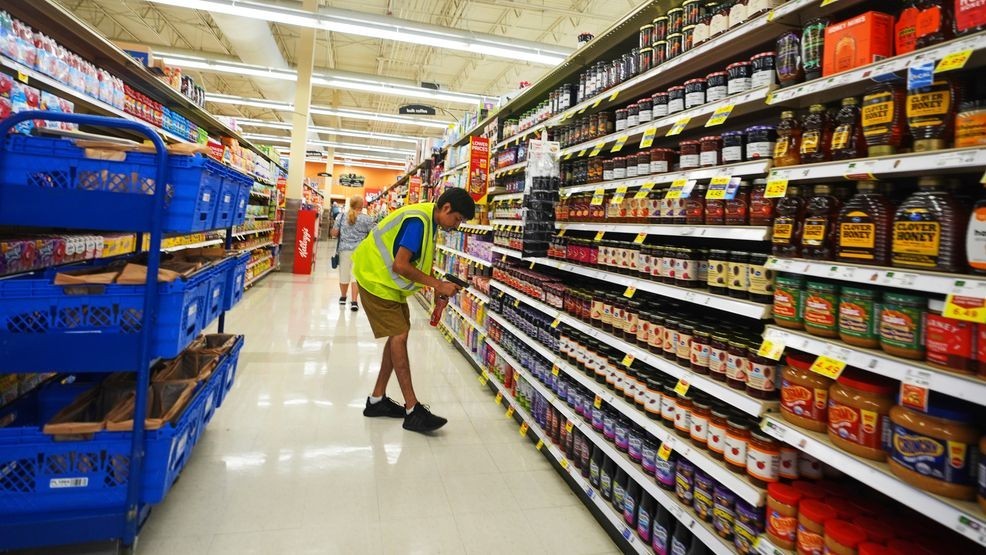WASHINGTON (TNND) — The U.S. economy has continued to be resilient despite a wave of uncertainty from uneven trade policy, warnings of increased costs due to tariffs and a slowing labor market but uncertainties about whether the momentum can sustain are lingering beneath the surface.
Last week’s revision of second quarter gross domestic product showed the economy was growing at a faster rate than initially thought, driven by a surge in consumer spending on services like restaurants and transportation and business investments in software and equipment driving the country’s artificial intelligence boom.
Altogether, the data show GDP increased at the strongest rate in nearly two years at 3.8%, compared to an initial estimate of 3% from July. It followed a slow start to the year, when GDP shrank by 0.6% in the first three months amid President Donald Trump’s onslaught of tariff threats and announcements that created chaos for industries to navigate.
The first quarter decline was driven by companies stockpiling products to get ahead of Trump’s tariffs, creating a drag on GDP. It was followed by slowing imports as tariffs took effect and continued robust spending from consumers that put growth back on track.
The Federal Reserve Bank of Atlanta estimates third quarter GDP continued to grow at a robust pace with a forecast of 3.9%.
Consumer spending has remained solid despite economic headwinds, with the latest reading of the personal consumption expenditures showing a 0.6% increase in August compared to the prior month. When adjusted for inflation, spending increased 0.4% last month.
But whether that momentum can continue is a major question facing consumers and the economy. Hiring has stalled this summer along with slowing job creation and slowly rising unemployment claims, driving concerns that spending could slow as Americans grow more concerned about their job security.
Hiring and job creation stalled this summer as businesses pulled back amid economic uncertainties from tariffs. Employers added just 22,000 jobs in August, which came after the first net loss in jobs since December of 2020 in June.
The spending also isn’t broad-based, and economists have noted it is being increasingly driven by Americans at the top end of the income spectrum while lower- and middle-income consumers are cutting back on savings and using credit more often to keep up their spending.
Companies have also been mostly willing and able to absorb increased costs from tariffs, a factor that may recede as profit margins taking hits could be hit again if consumers start to spend more judiciously.
“Both consumers and businesses in a rush to beat tariffs have been stockpiling as many goods as they could import, set new records earlier this year, and then all of a sudden, since August — when the Liberation Day tariffs phased in — we started seeing things slow down massively,” said Ryan Young, senior economist at the Competitive Enterprise Institute.
The murky economic picture has put the Fed in a challenging position to keep the U.S. from falling into a recession. A cooling labor market puts pressure on the central bank to cut rates to keep hiring on track, while sticky inflation and solid growth are incentive to stand pat.
Officials made their first cut in nearly a year during last month’s meeting with a quarter-point reduction over concerns about the wobbly job market and signaled more could be coming over concerns about the economy’s strength moving forward.
Investors are broadly expecting the Fed to make another 0.25% cut to its benchmark rate during its policy meeting next month. Traders see an 89% probability of a cut in October, according to the CME FedWatch tool.
Trump has called on the Fed to aggressively slash interest rates to boost the economy and make it cheaper to service the national debt, but much of the Federal Open Markets Committee has been hesitant to cut rates with inflation running above the 2% target and uncertainty about when tariff-induced price increases will start to come through.
Last month’s cut and post-meeting comments from Powell signaled more may be ahead as concern shifts to the strength of the labor market instead of inflation as officials try to balance both pieces of the central bank’s dual mandate: stable prices and maximum employment.
“They are having to make a choice, and they’re going to make the same choice they usually make,” Young said. “Since COVID, they’ve been prioritizing the inflation. That’s why they’ve had higher rates than a lot of people would like. Now looking ahead, because anything they do today isn’t going to have effect on the economy for several months, they are choosing to instead prioritize the labor market and economic stimulus.”
